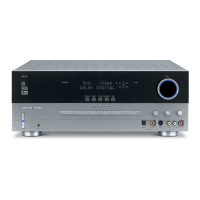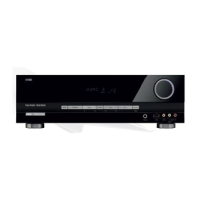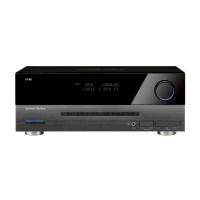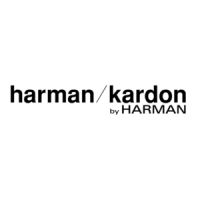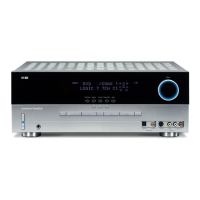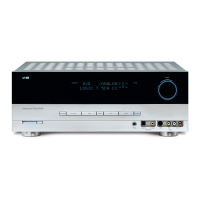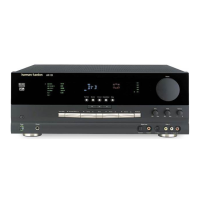Digital path receivers eliminate an additional conversion step by
keeping signals in the digital domain straight through until they reach
the speaker outputs. This preserves signal quality by removing the
possibility of inducing conversion artifacts and other noise.
and heat-producing power transistors and their large, heavy heatsinks
are used. Instead, totally digital amplifier circuitry and a switch-mode
power supply are used to power the system.
The end result is a lighter receiver with uncompromised power and
performance, and a significantly lower profile. This gives you more
freedom for the placement of home entertainment components,
since a DPR receiver can go where you never thought a high-quality
audio system would fit.
Because they are from Harman Kardon, the DPRs don’t scrimp on
features and flexibility. Others use digital amplifiers simply to save
space, but they lack the power and refinement of a DPR. Our exclusive
Logic 7 processing is complemented by the latest Dolby Digital
decoding and processing modes, including Dolby Pro Logic
®
IIx,
Dolby Headphone and Dolby Virtual Speaker modes. DTS-ES,
®
DTS
®
96/24 and DTS Neo:6
®
? The DPRs have them. Seven high-
power audio channels? We wouldn’t have it any other way! A full
With our breakthrough digital path receivers, Harman Kardon finally
unites those digital islands to avoid the introduction of noise each
time a signal is changed from one form to another. No matter how
good the converters are – and Harman Kardon uses some of the
best available in our analog-based products – some change to the
signal is inevitable.
That interference is all but eliminated in our DPR 1005 and DPR 2005
Digital Path Receivers, with the additional benefit of being able to
make the receiver more compact while delivering more, not less,
power. How is this done? By taking advantage of the incredible
system efficiency of the all-digital design – in excess of 80% as
compared to slightly more than 55% in an analog design – less
power is wasted. That, in turn, means there is less heat to remove
than when inefficient linear power supplies, oversized transformers,
Once a technical rarity, digital technology is now an integral part of
everyday life. While everything from cars to washing machines is now
controlled by digital processors, the world of audio seems to have put
only four of its five toes in the digital waters. Since the introduction of
the compact disc, playback has virtually become an exclusive digital
domain, one that now extends to DVD. Even video is on the digital
bandwagon, thanks to the stunning high-resolution imaging and
Dolby Digital sound of HDTV.
For all of that, audio/video is still a sea of digital islands connected by
analog bridges.To put that final toe in the digital water, it is necessary
to avoid converting signals back and forth between analog and
digital, as is the case in nearly all products, even those that boast
digital amplification. No brand has made the full commitment to keep
digital “digital” from input or initial conversion straight through to the
speaker outputs.
Until now.
10
multizone system, complete with assignable amplifier channels
to power it right out of the DPR and a standard Zone II remote?
Standard on our DPRs.The list goes on and on. After all, the
DPRs are Harman Kardon receivers at heart, and no one knows
how to build a receiver better than the company that invented the
receiver more than 50 years ago.
And then there’s the sound. It’s everything you expect from
Harman Kardon, and more.
Technology benefits are a bonus, but ultimately it’s the music and
movies that count. That was the reason that digital technology was
originally applied to home entertainment. With Harman Kardon’s new
digital path receivers, the promise of Power for the Digital Revolution
is once again fully realized.
11
Harman Kardon’s digital path receiver technology.
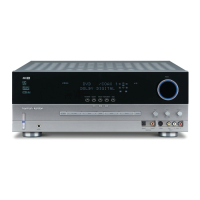
